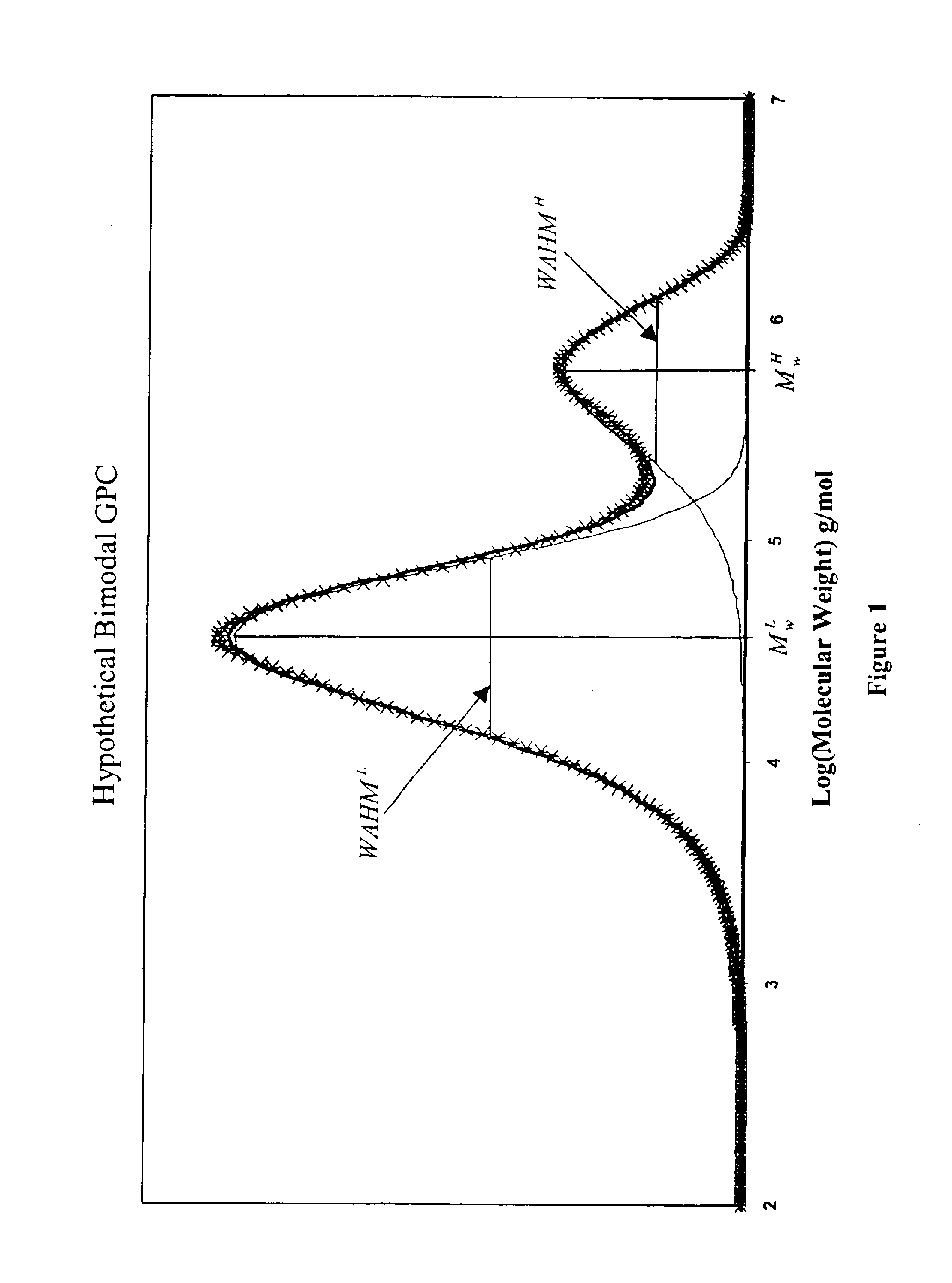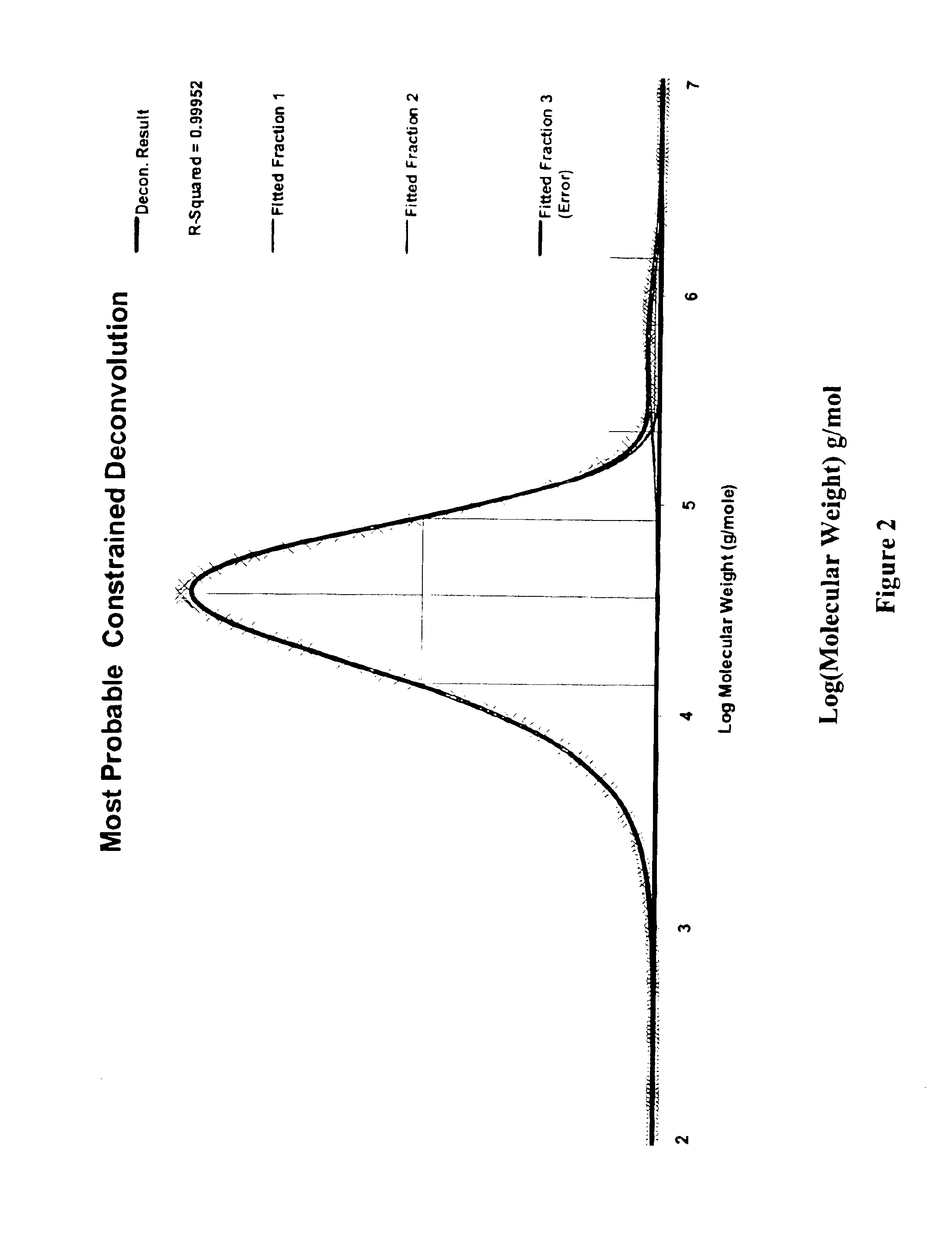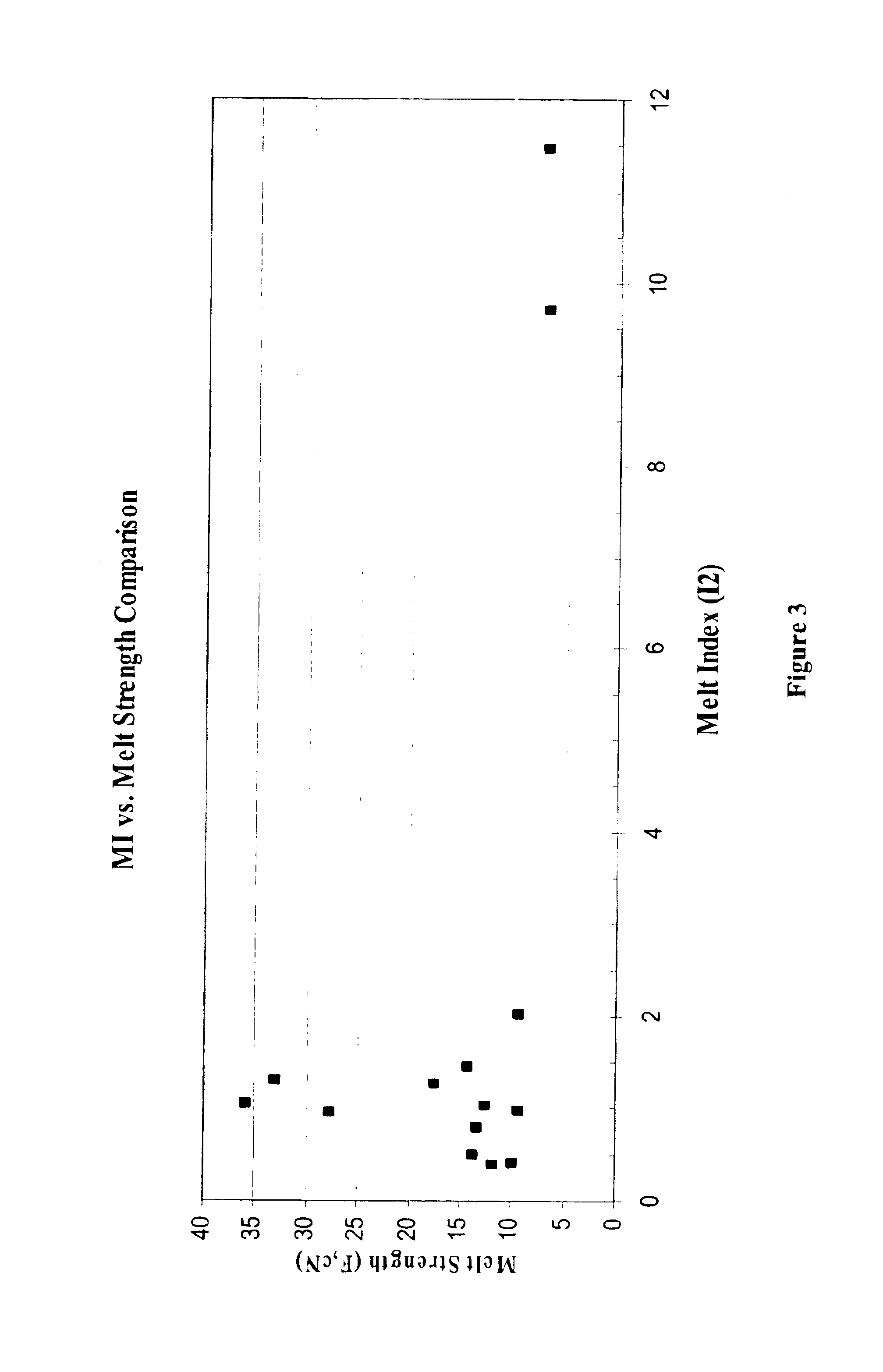High melt strength polymers and method of making same
a polymer and high melt strength technology, applied in the field of polyolefins, can solve the problems of poor tear resistance, low tensile strength, low toughness of ldpe film, and high cost of manufacturing ldp
- Summary
- Abstract
- Description
- Claims
- Application Information
AI Technical Summary
Benefits of technology
Problems solved by technology
Method used
Image
Examples
example 1
Ethylene Polymerization with Catalysts A and B
Using the general continuous solution polymerization procedure described above, ethylene and ISOPAR-E solvent were fed into the reactor at rates of about 4.50 lbs / hour and 26.50 lbs / hour, respectively. The temperature was maintained at about 140° C., and saturated. The polymer of Example 1 was prepared by feeding Catalyst A and Catalyst B, Armeenium borate, and MMAO-3A to the reactor to produce a catalyst concentration of 1.2 ppm, a ratio of catalyst A to catalyst B of 0.34, 22.8 ppm of Armeenium borate, and 4.3 ppm of Al according to the general procedure. The polymer of Example 2 was prepared by feeding Catalyst A and Catalyst B, Armeenium borate, and MMAO-3A to the reactor to produce a catalyst concentration of 0.60 ppm, a ratio of catalyst A to catalyst B of 0.33, 7.6 ppm of Armeenium borate, and 4.3 ppm of Al according to the general procedure. Other process parameters are recorded in Table I.
examples 2-11
Ethylene Polymerization with Catalysts A and B
The general procedure for continuous solution polymerization described above was repeated for Examples 2-9. Various parameters of the reaction are recorded in Table I.
examples 11-13
Ethylene / 1-Octene Interpolymers Using Catalysts A and B
Ethylene / 1-Octene interpolymers were prepared using the general continuous solution procedure described above. Ethylene, 1-octene, and ISOPAR-E solvent were fed into the reactor at rates of about 4.50 lbs / hour, 0.70 lbs / hour, and 30.20 lbs / hour, respectively. The temperature was maintained at about 140° C., and saturated. Examples 3 and 4 were prepared by feeding Catalyst A and Catalyst B, Armeenium borate, and MMAO-3A to the reactor to produce a catalyst concentration of 2.36 ppm, a ratio of catalyst A to catalyst B of 0.44, 53.2 ppm of Armeenium borate, and 8.6 ppm of Al according to the general procedure. Other process parameters are also recorded in Table V.
TABLE VPolymerization conditions and properties of resulting polymerethylenesolvent. flow,octene flow,H2 flow,ethyleneExampletemperature, C.flow, lb. / hrlb / hrlb / hrsccmconversion, %1140.34.5022.60.0050.090.232139.04.5026.50.005.090.083140.24.5029.20.000.090.204138.54.5031.0...
PUM
| Property | Measurement | Unit |
|---|---|---|
| molecular weight distributions | aaaaa | aaaaa |
| molecular weight distribution | aaaaa | aaaaa |
| molecular weight distribution | aaaaa | aaaaa |
Abstract
Description
Claims
Application Information
 Login to View More
Login to View More - R&D
- Intellectual Property
- Life Sciences
- Materials
- Tech Scout
- Unparalleled Data Quality
- Higher Quality Content
- 60% Fewer Hallucinations
Browse by: Latest US Patents, China's latest patents, Technical Efficacy Thesaurus, Application Domain, Technology Topic, Popular Technical Reports.
© 2025 PatSnap. All rights reserved.Legal|Privacy policy|Modern Slavery Act Transparency Statement|Sitemap|About US| Contact US: help@patsnap.com



